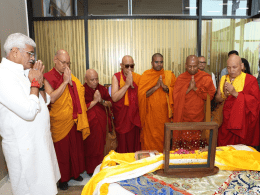Set amidst emerald rice fields in Bhutan’s Punakha Valley, Chimi Lhakhang is unlike any other monastery in the Himalayan kingdom. Known affectionately as the “Temple of Fertility,” it draws pilgrims and curious travelers alike, not just for its serene setting, but for the stories, symbols, and spiritual blessings it offers to those seeking children, love, or a deeper connection to Bhutan’s unique culture.
The temple was built in the 15th century by followers of Lama Drukpa Kunley, a revered Tibetan-Bhutanese saint and one of the most colorful figures in Bhutanese history. Often called the “Divine Madman”, Drukpa Kunley was known for using unorthodox, and sometimes outrageous, methods to teach Buddhism. Through humor, song, and sexual symbolism, he challenged religious dogma and used his eccentricity to deliver powerful spiritual lessons.
Chimi Lhakhang was established on a small hill where Drukpa Kunley is said to have subdued a demoness with his “magic thunderbolt”, a euphemism for the phallus, which remains a prominent symbol throughout the temple and surrounding village. Painted phalluses on homes, carved wooden replicas sold as souvenirs, and the phallic blessings offered to couples trying to conceive may be startling at first, but in Bhutan they are embraced with reverence and humor alike.

The walk to the temple begins in the village of Sopsokha and meanders through picturesque fields and traditional farmhouses. Along the way, visitors pass vibrant wall murals of flying phalluses, meant to ward off evil spirits and bring good fortune. It’s a short, scenic 20-minute walk that feels both light-hearted and sacred.
Upon reaching the temple, visitors are greeted by monks who maintain the quiet sanctity of the space. Inside, the temple is modest in size but rich in spiritual presence. The main relic is a statue of Drukpa Kunley, and beside it rests the wooden phallus he is said to have carried from Tibet, used to bless devotees. Women hoping to conceive are gently tapped on the head with this artifact as monks chant prayers for fertility and wellbeing.
Over the years, Chimi Lhakhang has become a pilgrimage site for Bhutanese and foreign couples facing fertility challenges. Many return later with photographs of their newborns in gratitude. The temple’s walls are lined with these baby pictures, a quiet testament to faith, belief, and the enduring legacy of a mad saint.
Yet, beyond its association with fertility, Chimi Lhakhang embodies the essence of Bhutanese spirituality: playful, earthy, and profoundly rooted in compassion. It is a place where the sacred and the sensual coexist, where laughter and devotion are not opposites but partners in the journey toward enlightenment.
For travelers, a visit to Chimi Lhakhang is more than a cultural stop, it is an invitation to loosen the grip of rigid expectations, to embrace joy, and to witness a unique facet of Bhutanese belief that celebrates life in all its surprising forms.








